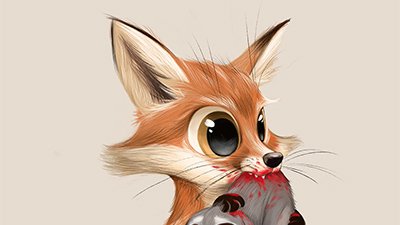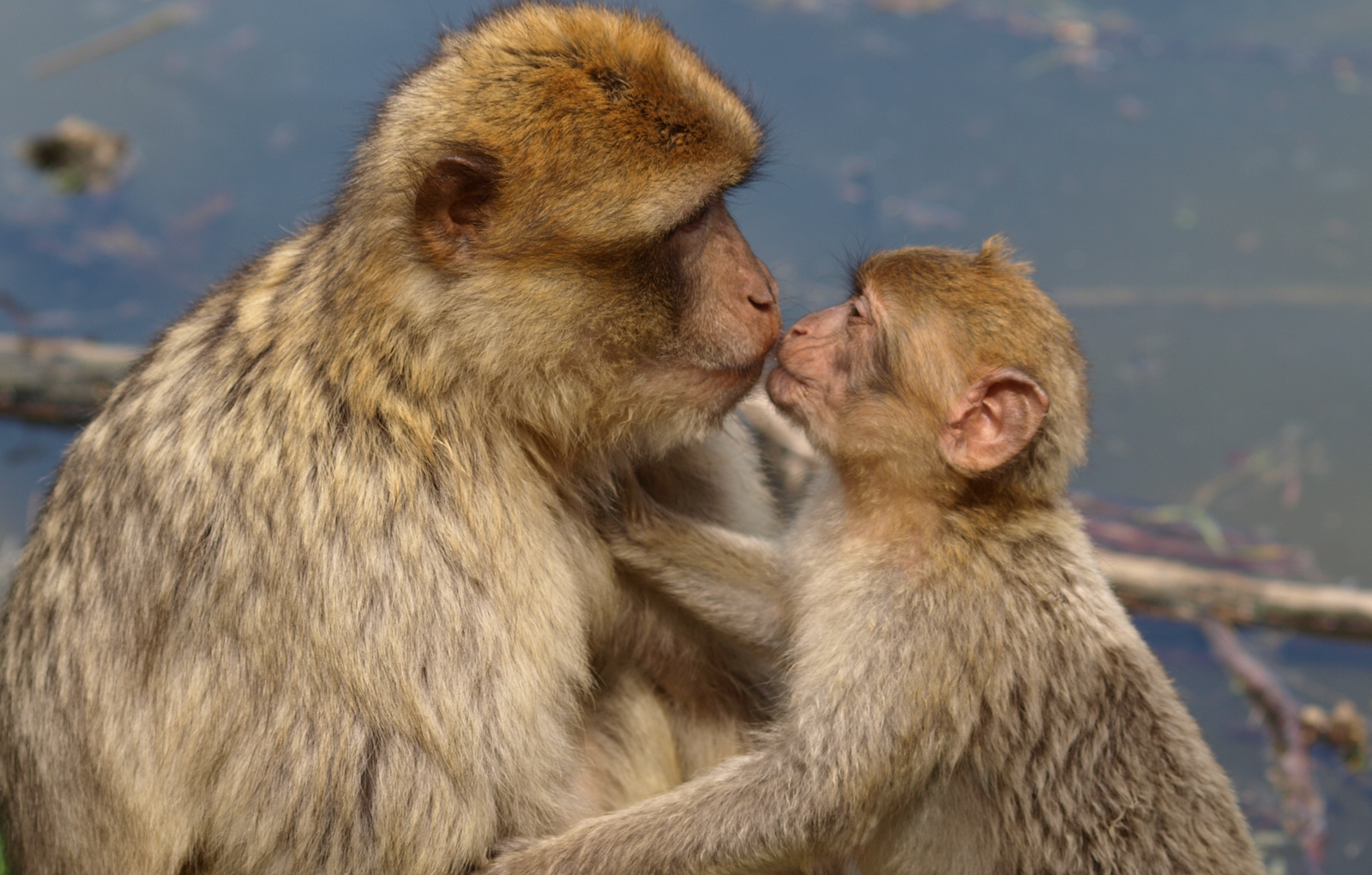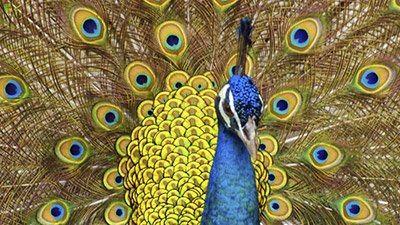
UK Academic: Wildlife Documentaries Need More Gay Animals
Wildlife documentaries are too family friendly, complains UK academic.
News Source
- Christian Post: “Wildlife Documentaries Should Show More Gay Sex, Academic Study Says”
What’s wrong with the BBC’s wildlife documentaries hosted by the revered TV personality David Attenborough? Well, according to Brett Mills, the head of the School of Film, Television and Media at the University of East Anglia in Norfolk, U.K., they should show more homosexual animal activity. His article “The animals went in two by two: Heteronormativity in television wildlife documentaries” assessing the content of three popular BBC wildlife programs was just published in the European Journal of Cultural Studies.
Mills opens with the emotionally compelling example of a couple of penguins that share nurturing duties for their chick in the harsh Antarctic, featured in the BBC program Life in the Freezer. He complains that interpretative voiceovers portraying such heterosexual monogamous parenting behavior as normal and important for animal survival are deceptive and harmful to human society. Why? Because “how such activities are repeatedly represented draw on normalized human notions of such behavior.” He says to make “sense of what animals do [voiceovers] must always ‘shape nature according to specific cultural values.’”1 Yet because there is more diversity in animal behavior than such shows admit, he contends, the programs falsify the truly normal and natural variations by which humans should measure their morality, if they are going to use such anthropomorphic standards.
“While equating non-human social structures with those of humans is always problematic,” Mills writes, “it is unsurprising that humans turn to animal behaviour for reassurance in these matters.” Many people seek solace in the “naturalness” of heterosexual animal mates caring for their young, he indicates, so he maintains it is important to show television viewers that both homosexual and “polygamous” animal behaviors are just as “natural.”2
Mills writes that typical wildlife documentary narration is guilty of “heterosexual anthropomorphizing”3 But it isn’t just that wildlife documentaries ignore the claim that “most non-human species have complex and changeable forms of sexual activity.”4 The main problem is that “animal behavior is commonly used as evidence for ‘natural’ forms of human behavior.” And he is of course opposed to any suggestion that homosexual human behavior is wrong or unnatural.
The claim that homosexual behavior is common and natural among animals was a key argument in the 2003 Lawrence v. Texas case in which the United States Supreme Court made it unconstitutional to punish homosexual behavior or to pass laws based on morality.
The claim that homosexual behavior is common and natural among animals was a key argument in the 2003 Lawrence v. Texas case in which the United States Supreme Court made it unconstitutional to punish homosexual behavior or to pass laws based on morality. Biologist Bruce Bagemihl’s book Biological Exuberance: Animal Homosexuality and Natural Diversity was cited as evidence in that case. Mills draws heavily on Bagemihl’s book. Condemning the tendency of scientists and society to consider animal reproduction to be of primary importance and alternative behavior as abnormal, Bagemihl writes, “The traditional view of the animal kingdom [is] what one might call the Noah’s ark view”5 with animals paired up for reproductive purpose.
Commenting on Brent Mills’s complaints, executive editor David Mills of First Things, a publication of The Institute on Religion and Public Life, commented that Dr. Mills and his sources err by presupposing that anything “natural” is “good.” David Mills writes, “Their understanding of the Fall was deficient, and their identification of ‘natural’ confused a way of thinking about who we really are and how we ought to act, with ‘natural’ meaning the life we observe in nature. Using that logic, homosexual activists now invoke these animals as a moral argument for the good of human homosexuality.”6
David Mills goes on to quote Gregory Laughlin of Samford University School of Law as he cites other “natural” behaviors that human society should not emulate: “Many animals have multiple sex partners, and the male is often uninvolved in caring for his offspring. Does that make adultery, promiscuity, and paternal abandonment ‘natural’ and, therefore, licit among humans? Animals go into a frenzy when fed, pushing others out of the way and even trampling others to get to the food. Does that make greed, gluttony, covetousness, and theft ‘natural’ and, therefore, licit among humans?”7
The Bible tells us that much of creation changed as a result of man’s sin entering the world. Therefore, just as animal behavior became violent, so other animal behavior likely changed considerably from the behavior Adam witnessed in Eden. David Mills’s comments are certainly correct, but we should go one step further. Even if we only considered nonviolent animals whose sexual behaviors might be relatively unchanged, we err from the very foundation if we try to judge human morality on the basis of how animals behave. Animals were not made in the image of God. Human beings were. Animals bear no moral responsibility or sin guilt. Humans do.
Ascribing human moral standards to animals reinforces the unbiblical concept that humans are merely highly evolved animals. Thus, while most of us enjoy wildlife documentaries full of anthropomorphic representations of animal analogues of fuzzy warm family values, we err if we look to any animals to figure out what is normal and right for people to do. And that is the case whether we look at family friendly animal behavior or any other kind. God our Creator has the authority to define moral standards for us, and He has provided them in the Bible and reinforced them in our conscience. But we cannot determine them from studying the sin-cursed natural world of animals.
Further Reading
- Animal Sexual Behavior
- The Fall and the Problem of Millions of Years of Natural Evil (journalists distort studies)
- Pro-Gay Theology: Does the Bible Approve of Homosexuality?
For More Information: Get Answers
Remember, if you see a news story that might merit some attention, let us know about it! (Note: if the story originates from the Associated Press, FOX News, MSNBC, the New York Times, or another major national media outlet, we will most likely have already heard about it.) And thanks to all of our readers who have submitted great news tips to us. If you didn’t catch all the latest News to Know, why not take a look to see what you’ve missed?
(Please note that links will take you directly to the source. Answers in Genesis is not responsible for content on the websites to which we refer. For more information, please see our Privacy Policy.)
Footnotes
- Emphasis in original. Mills is quoting from N.L. Elliot (2001) Signs of anthropomorphism: The case of natural history television documentaries. Social Semiotics 11, no. 3 (2001): 290 in his article, “The animals went in two by two: Heteronormativity in television wildlife documentaries,” European Journal of Cultural Studies 16 (February 2013): 100–114.
- B. Mills, “The animals went in two by two: Heteronormativity in television wildlife documentaries,” European Journal of Cultural Studies 16 (February 2013): 100–114.
- Ibid.
- Ibid.
- Page 36 of Bagemihl B. (1999) Biological Exuberance: Animal Homosexuality and Natural Diversity. London: Profile Books. Cited in B. Mills, “The animals went in two by two: Heteronormativity in television wildlife documentaries,” European Journal of Cultural Studies 16 (February 2013): 100–114.
- www.firstthings.com/blogs/firstthoughts/2013/02/20/the-gay-animals-publicist
- Ibid.

Answers in Genesis is an apologetics ministry, dedicated to helping Christians defend their faith and proclaim the good news of Jesus Christ.
- Customer Service 800.778.3390
- Available Monday–Friday | 9 AM–5 PM ET
- © 2025 Answers in Genesis



